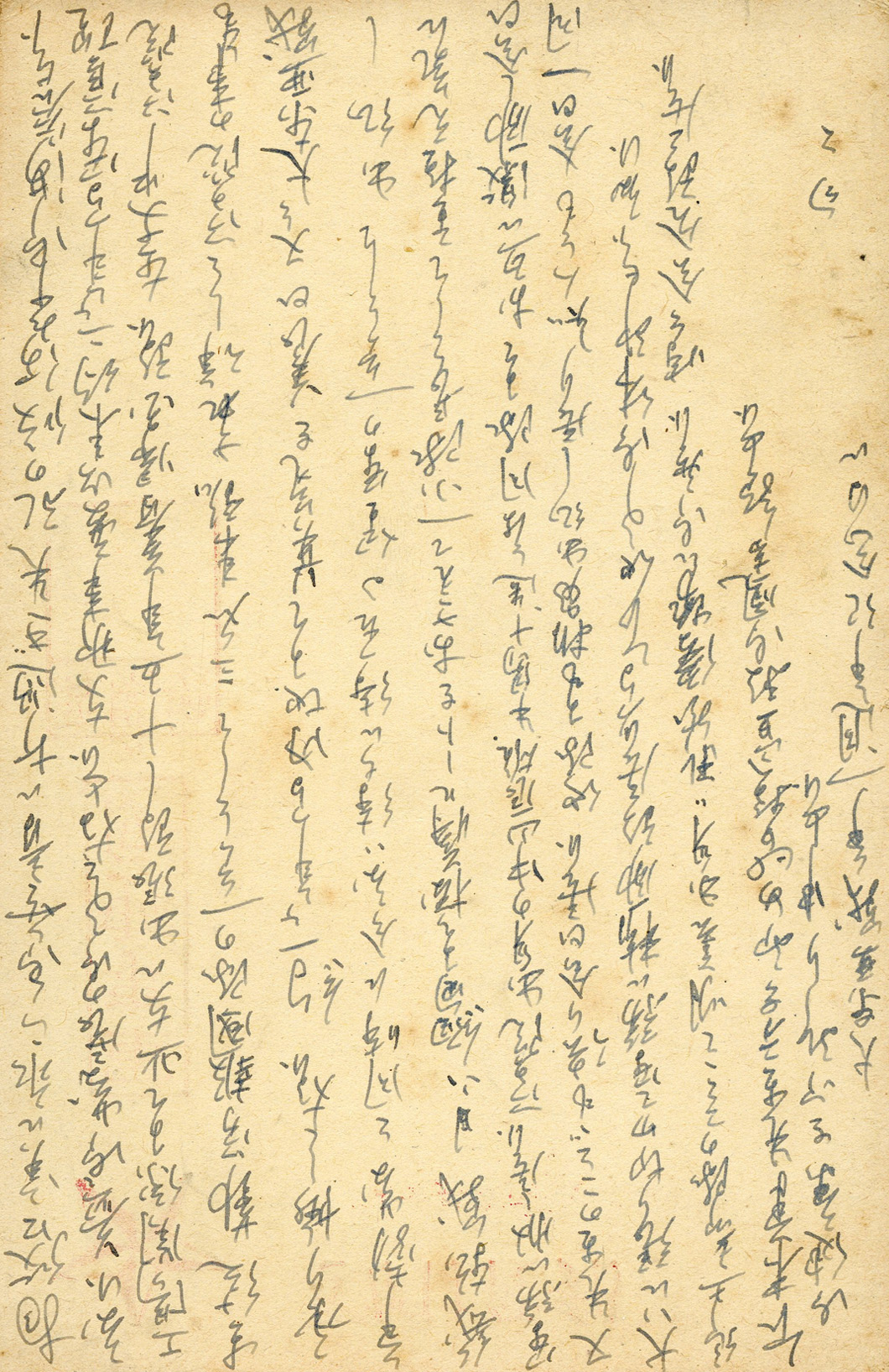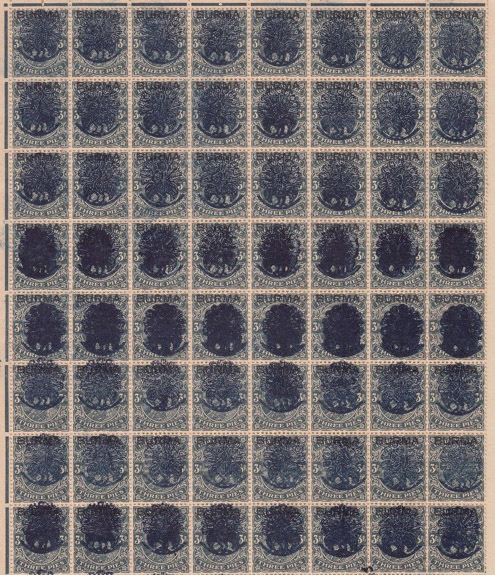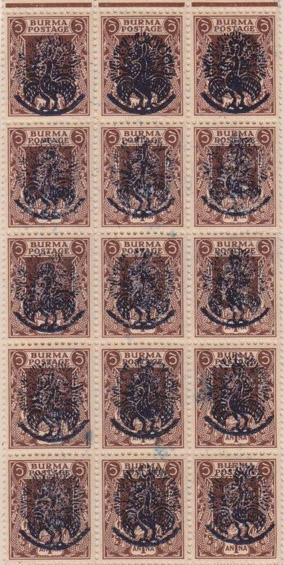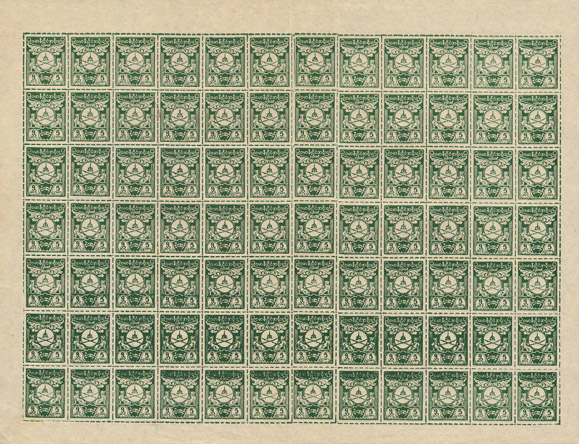If you were wise, you would never purchase stamps from the Japanese occupations (excluding the Philippines) without expertization, as there are some extremely good fakes.
Caveat emptor -- let the buyer beware!
They used existing stocks of British occupation of Burma stamps, obliterating the King of Britain's face with the peacock design of Burma.
I've included some prices to illustrate the insane rarity of some of this material.
[Below: Blue peacock ink overprint, circa 1942. These overprints are found in blue, black or red ink.]
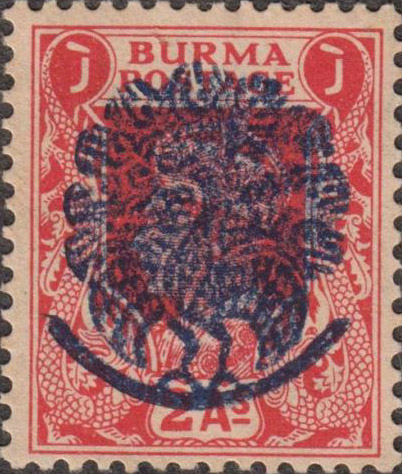
__________________________________________
[Below: Black peacock ink overprint, circa 1942. This stamp is valued at approximately $200.00 (as of 2015).]
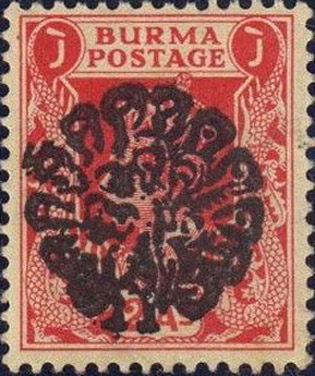
__________________________________________
[Below: ...]
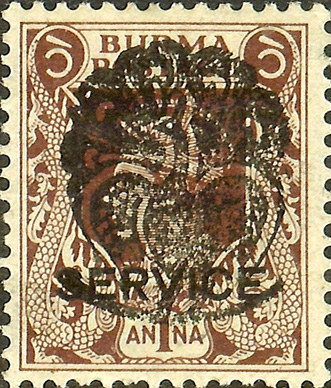
__________________________________________
[Below: ...]
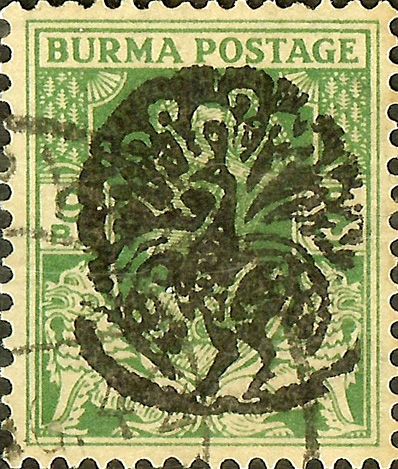
__________________________________________
[Below: ...]
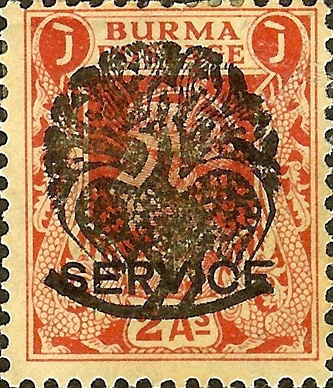
__________________________________________
[Below: ...]

__________________________________________
[Below: Black peacock ink overprint, circa 1942. This pair of stamps is valued at approximately $300.00 (as of 2015).]

__________________________________________
[Below: Black peacock ink overprint, circa 1942. This pair of stamps is valued at approximately $180.00 (as of 2015).]
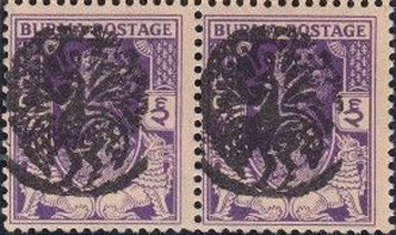
__________________________________________
[Below: Peacock overprint in sheet form. This sheet is valued at approximately $175.00 (as of 2015).]
__________________________________________
[Below: Peacock overprint in partial sheet form. This sheet is valued at approximately $600.00 (as of 2015).]
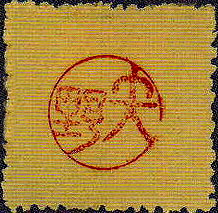
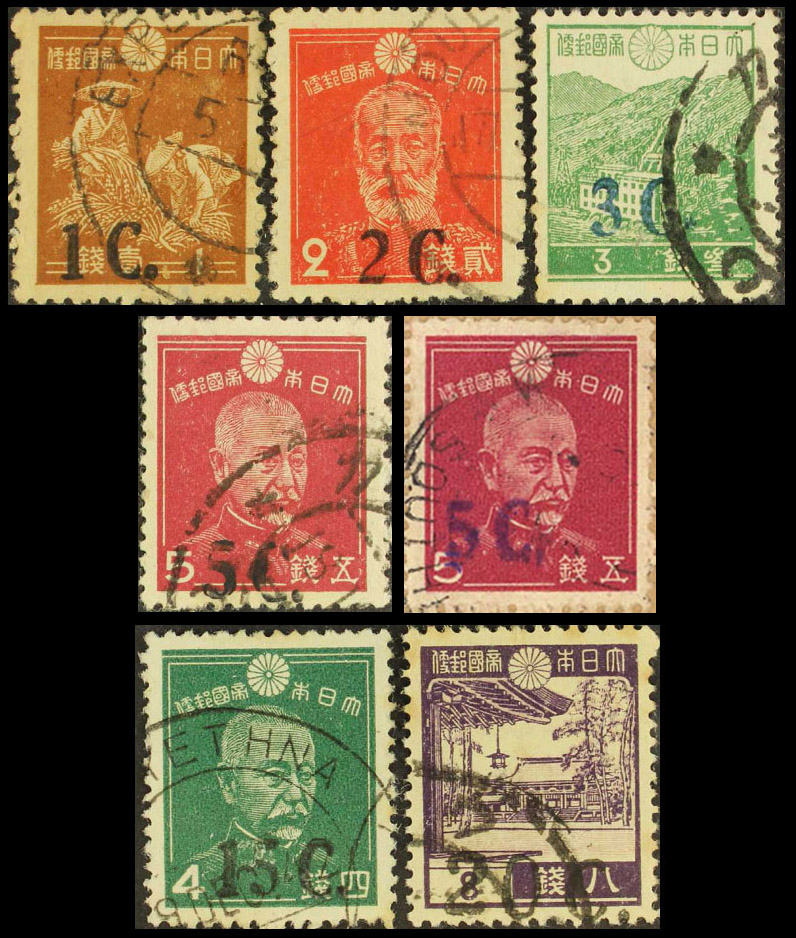
__________________________________________
[Below: Miscellaneous overprinted Japanese stamps for use in Burma.]
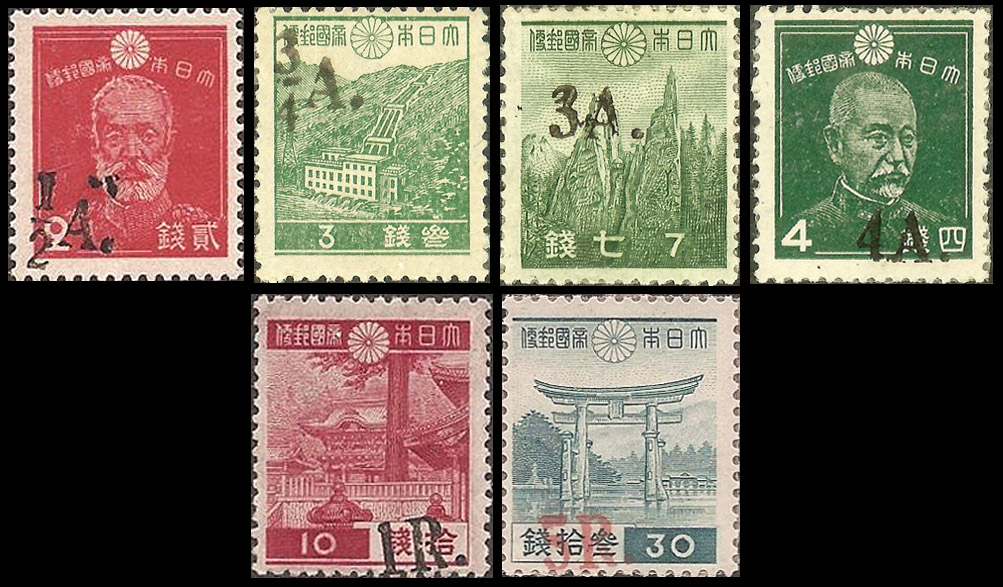
[Below: 1 R. black overprint. Block of four. Inverted overprints.]
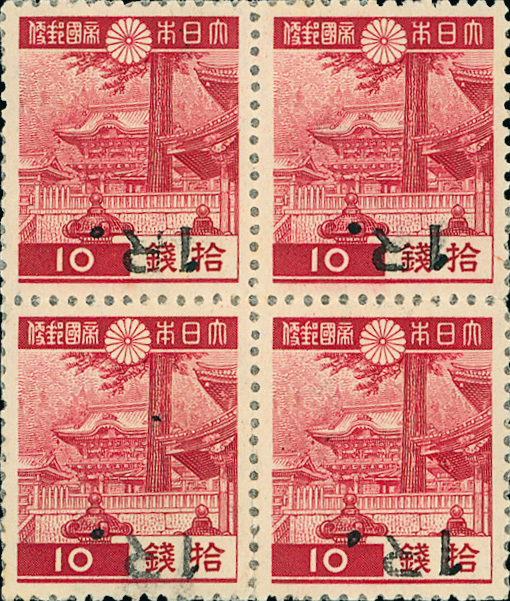
[Below: 5 cent pre-printed envelope. This stamp is valued at approximately $130.00 (as of 2015).]
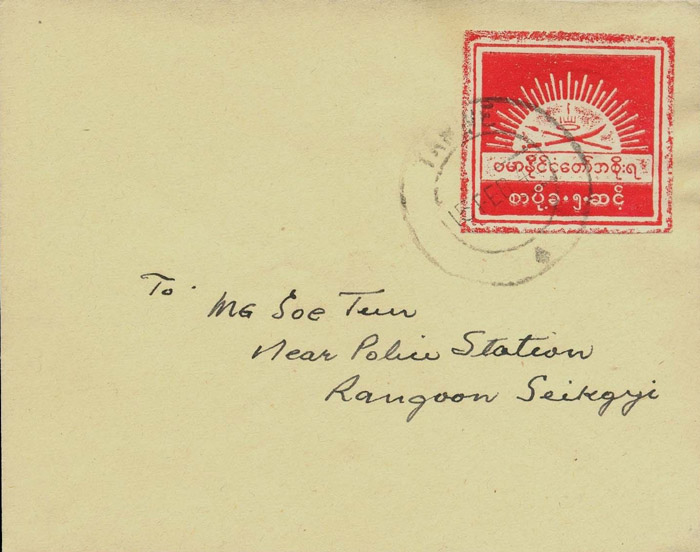
__________________________________________
[Below: 5 cent.]
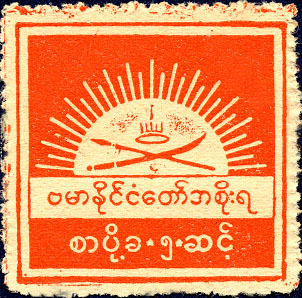
[Below: Note the different paper types.]
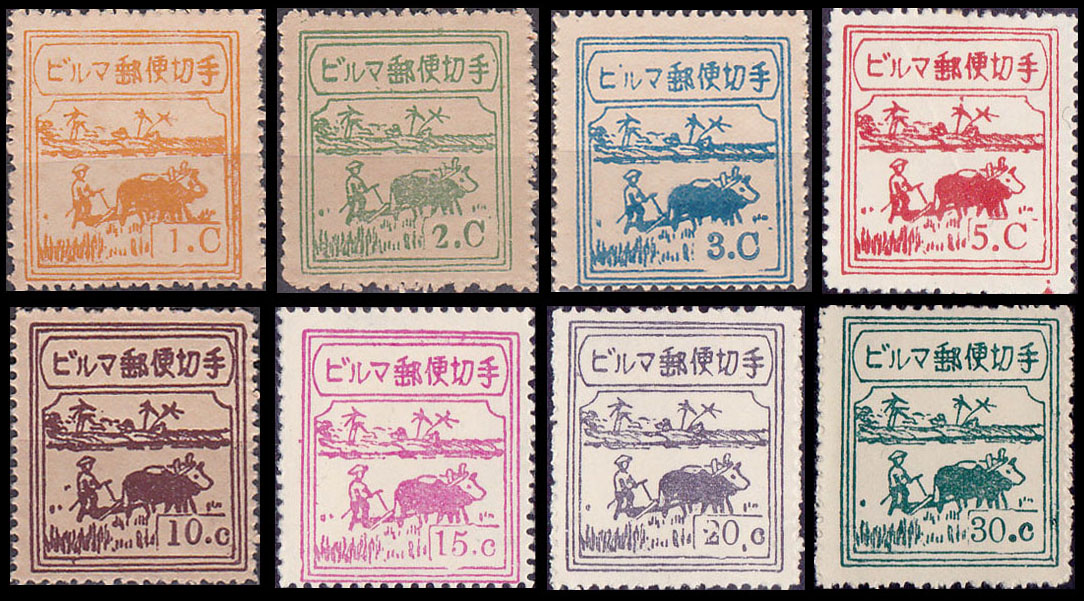
__________________________________________
[Below: Rare imperforate 2c. sheet.]
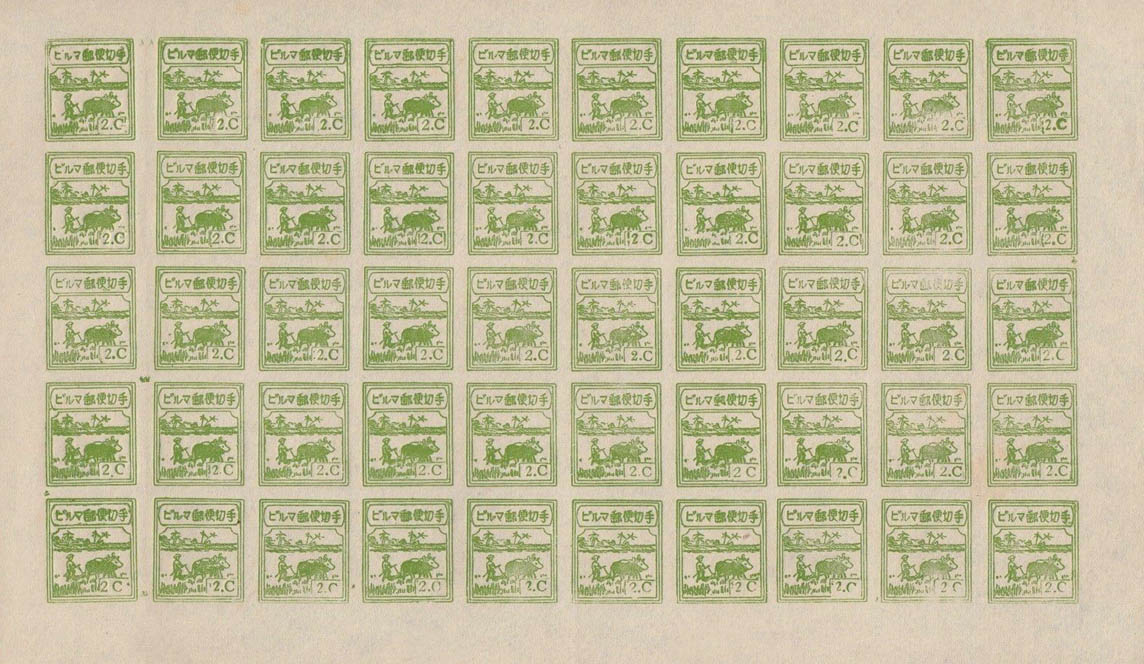
[Below: Farmer plowing a paddy field overprinted 5 c. overprinted variety.]
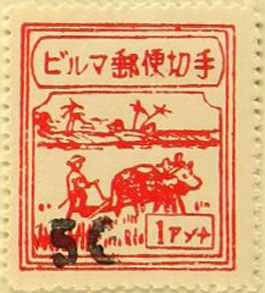
__________________________________________
[Below: Farmer plowing a paddy field overprinted 5 c. stamps on envelope.]
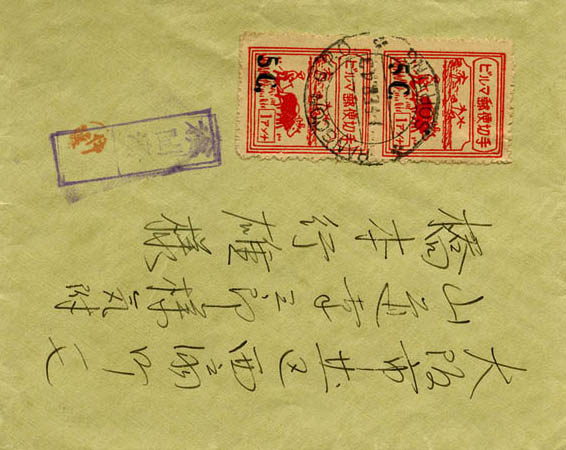
[Below: This design shows a Burmese soldier with a rifle on his back, chiseling the word 'Independence' on a block of wood, using his bayonet and a hammer. At the top are the words 'Government of Burma' and at the bottom 'Postage 1 Cent'. This block of four is valued at approximately $150.00 (as of 2015).]
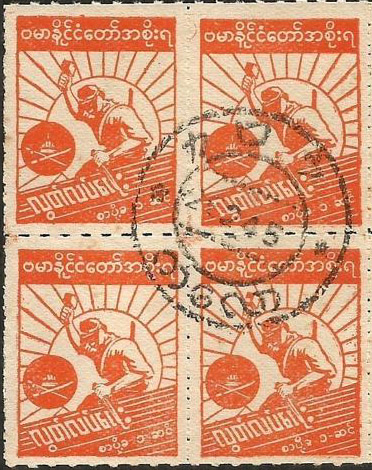
__________________________________________
[Below: The second stamp in this set is a 3 cent stamp. It depicts a young Burmese man holding leaves from the Aung-tha-bye tree. In his other hand he holds the national flag. At the top is written 'Burma Independence' and at the bottom 'Postage Stamp'. In the four corners of the frame are drawings of a Brahmini Duck, a religious emblem carved on a number of pillars on the grounds of various pagodas.]
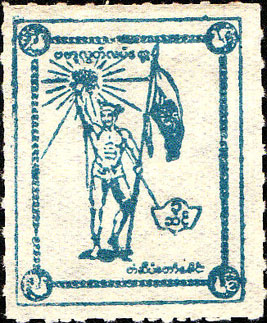
__________________________________________
[Below: The third stamp in the independence set features a Burmese boy in military uniform marching with Burmese flag on his shoulder. At the top it says 'In Commemoration of Independence' and at the bottom '5 Cents Postage'.]
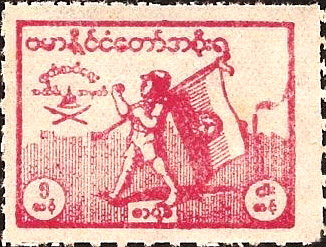
[Below: The first design features a Burmese girl with a water jug on her head.]
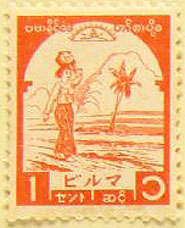
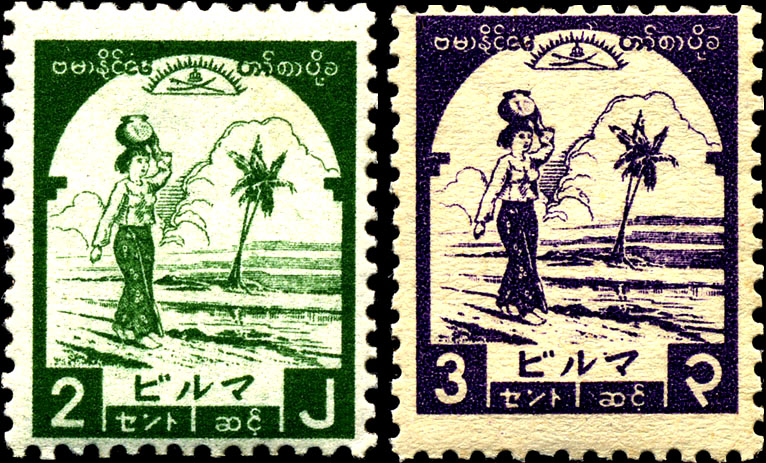
__________________________________________
[Below: The second design features an elephant carrying a teak log.]

__________________________________________
[Below: The above stamp in rare sheet form. This sheet is valued at approximately $110.00 (as of 2015).]
__________________________________________
[Below: The third and last design in this set is the Watchtower of Mandalay Palace.]
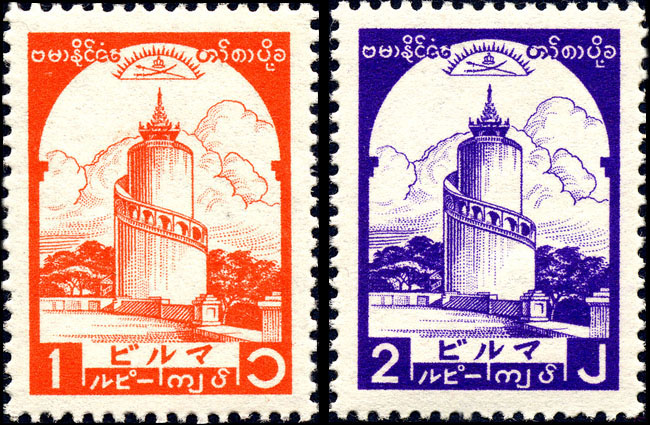
__________________________________________
[Below: Rare imperforate variety.]
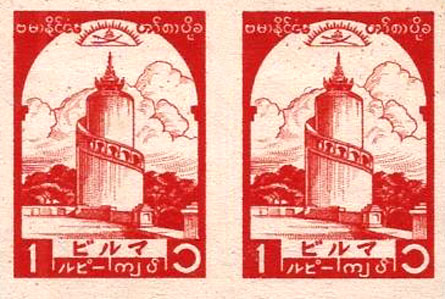
[Below: The first design features a Burmese woman in traditional dress.]
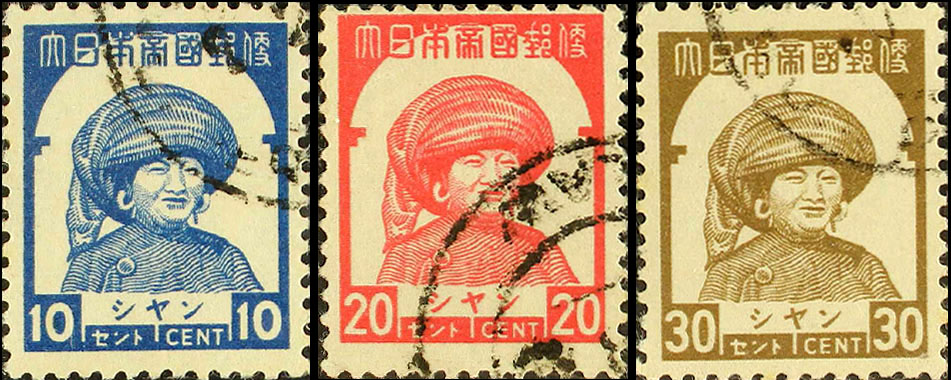
__________________________________________
[Below: The second design features a bullock cart.]

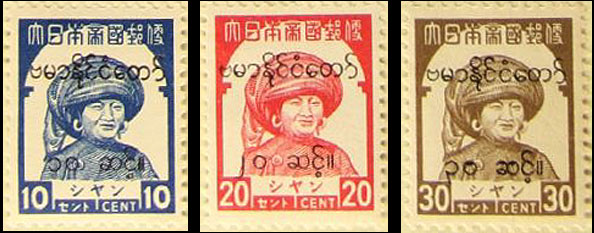

__________________________________________
[Below: The above stamp in rare sheet form.]
__________________________________________
[Below: Burmese girl with a water jug and Burmese woman in traditional dress stamps both overprinted with Japanese characters.]
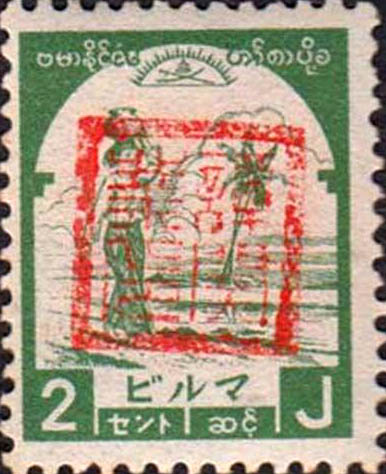

__________________________________________
[Below: Envelope from 1944 with overprinted stamps. This envelope is valued at approximately $550.00 (as of 2015).]
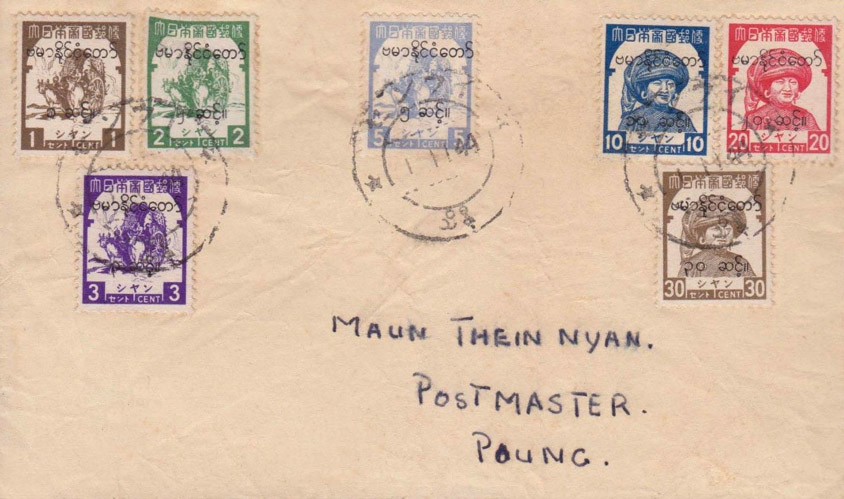
__________________________________________
[Below: Block of six, valued at approximately $200.00 (as of 2015).]
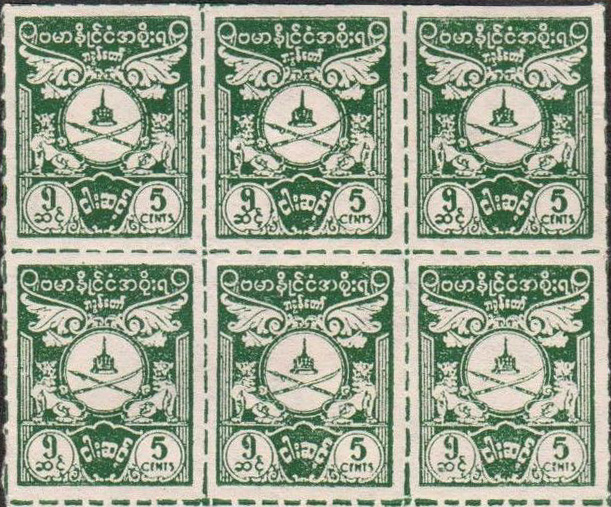
__________________________________________
[Below: The above stamps in rare sheet form. This sheet is valued at approximately $1500.00 (as of 2015).]
__________________________________________
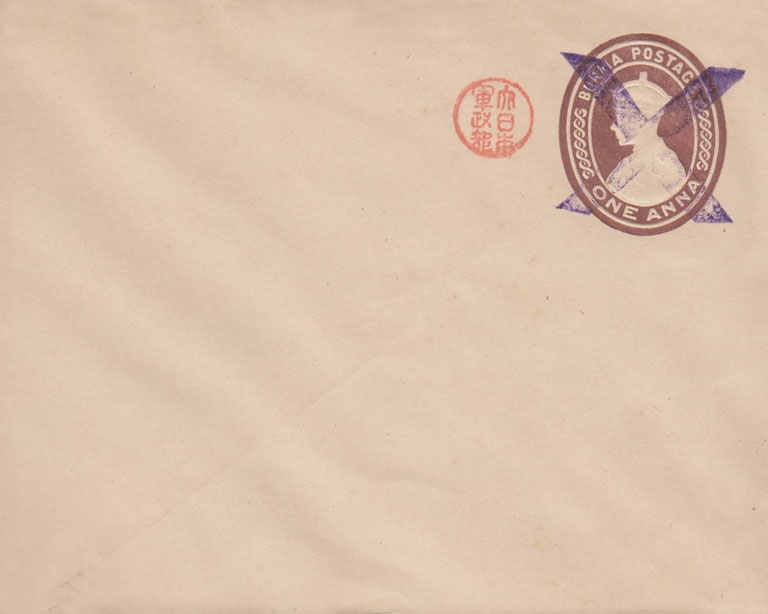
__________________________________________
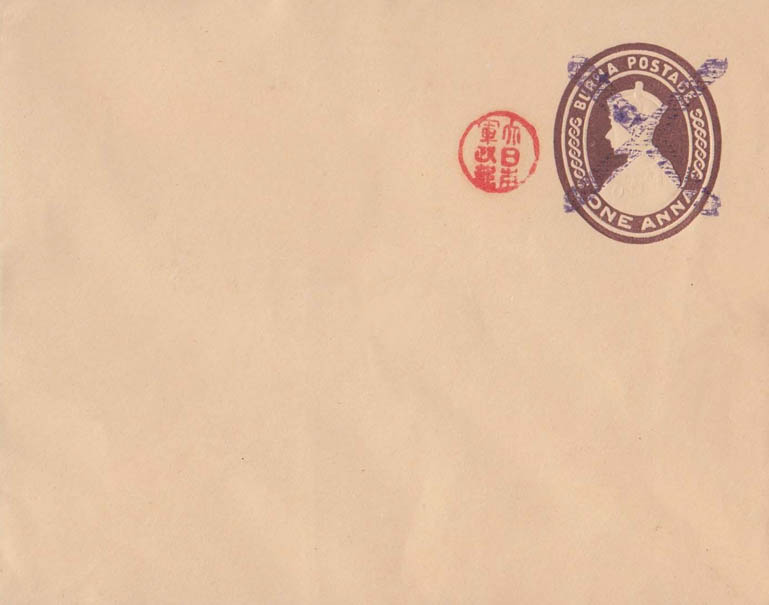
__________________________________________
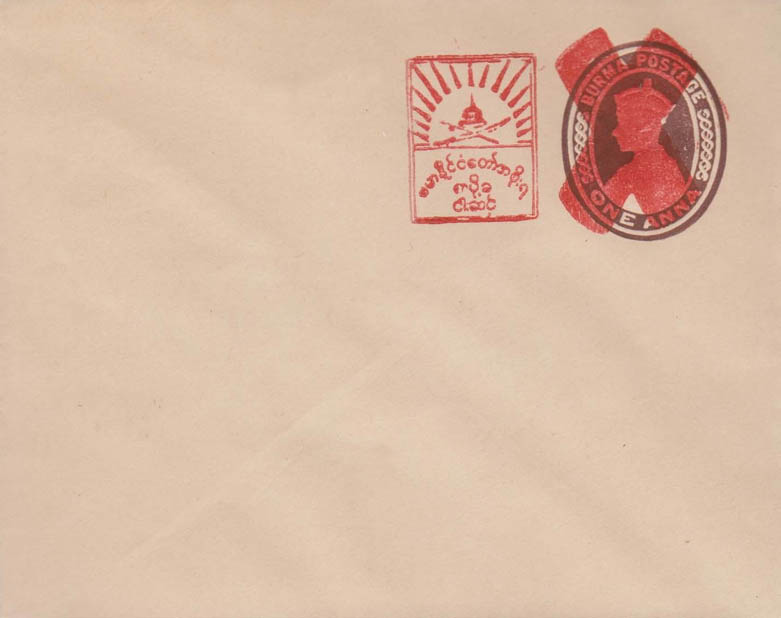
__________________________________________

__________________________________________

__________________________________________
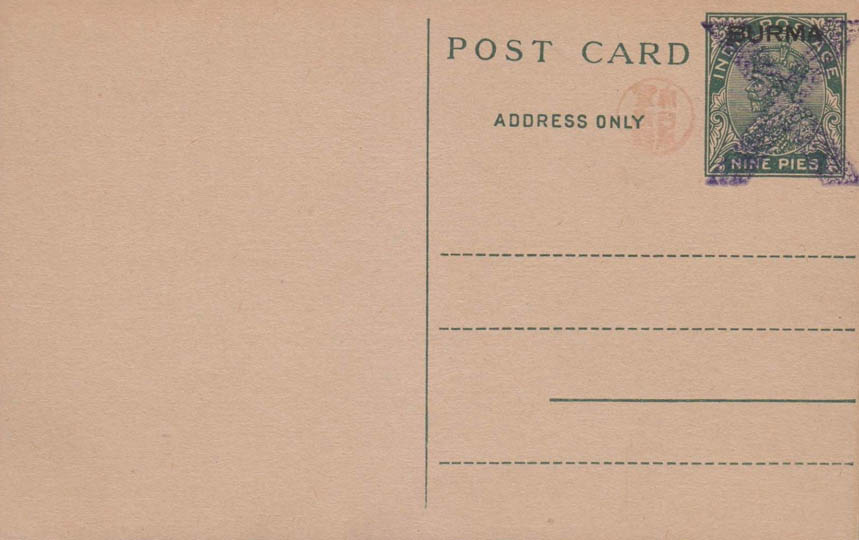
__________________________________________
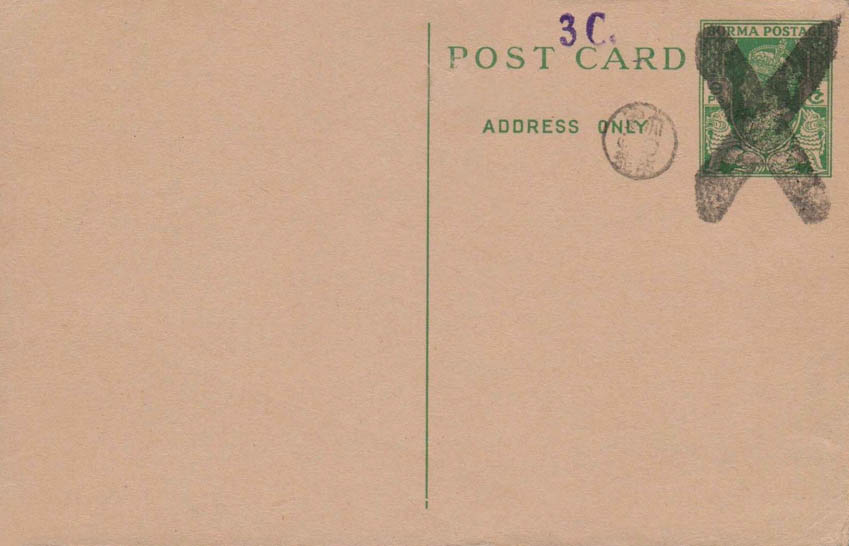
__________________________________________

__________________________________________

__________________________________________
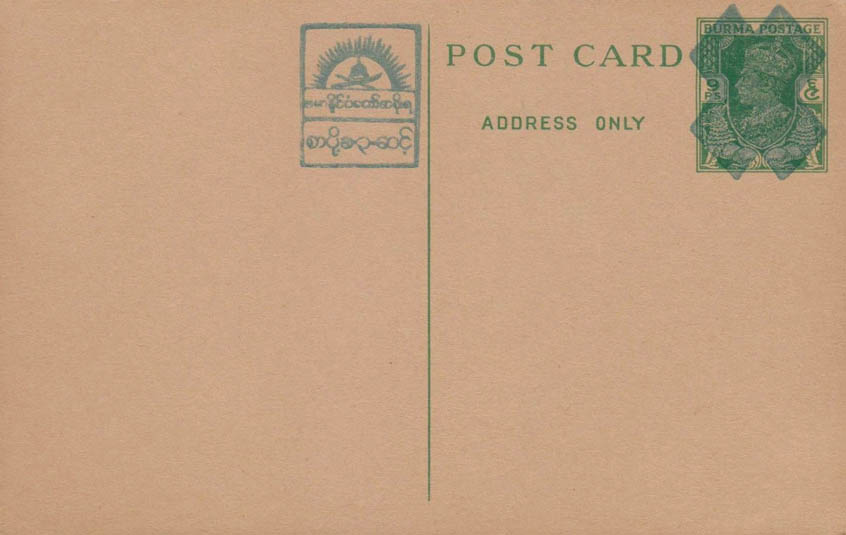
__________________________________________
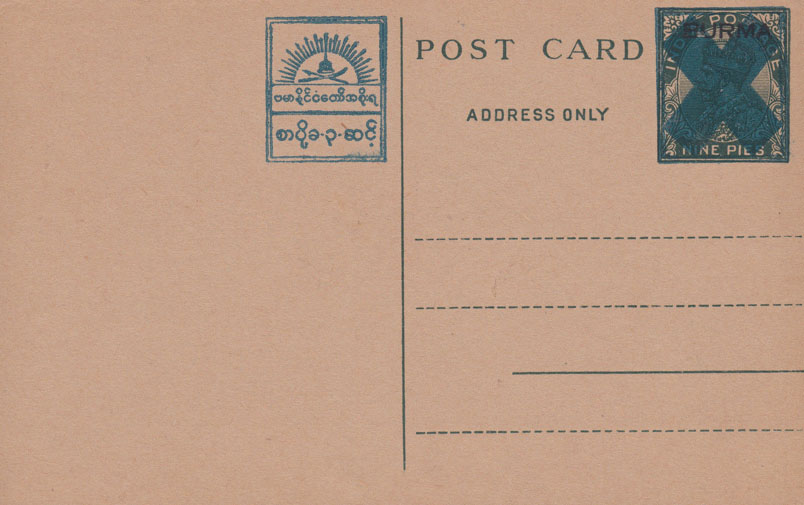
__________________________________________
[Below: Oddly this postcard bearing the image of King George wasn't X'ed out.]
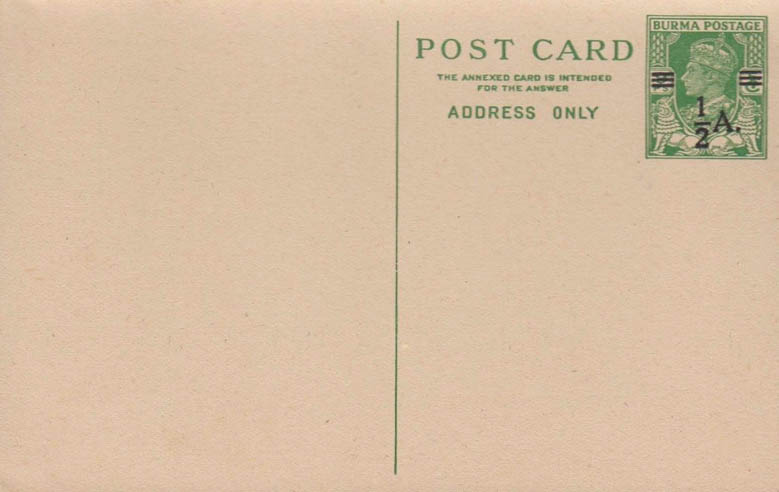
__________________________________________
[Below: 1943 court fees.]
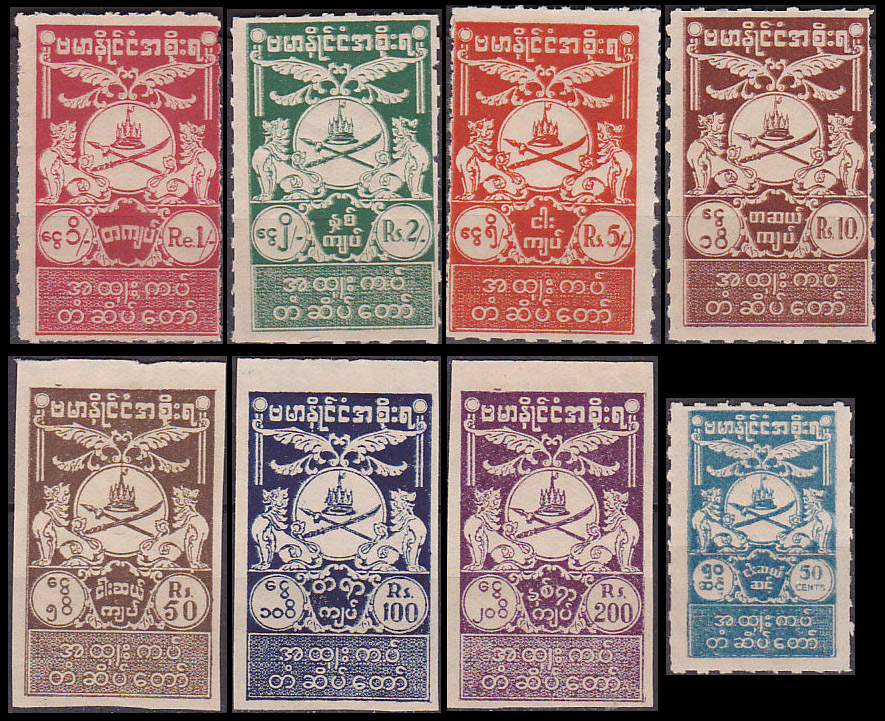
__________________________________________
[Below: 1943 court fees.]

__________________________________________
[Below: Japanese soldier's postcard. This is 'star type 1A', using 'Manila 4-sheet' paper. It is from Burma, from the 'Kiku 8903 Force', 'Hara Party'. Front.]
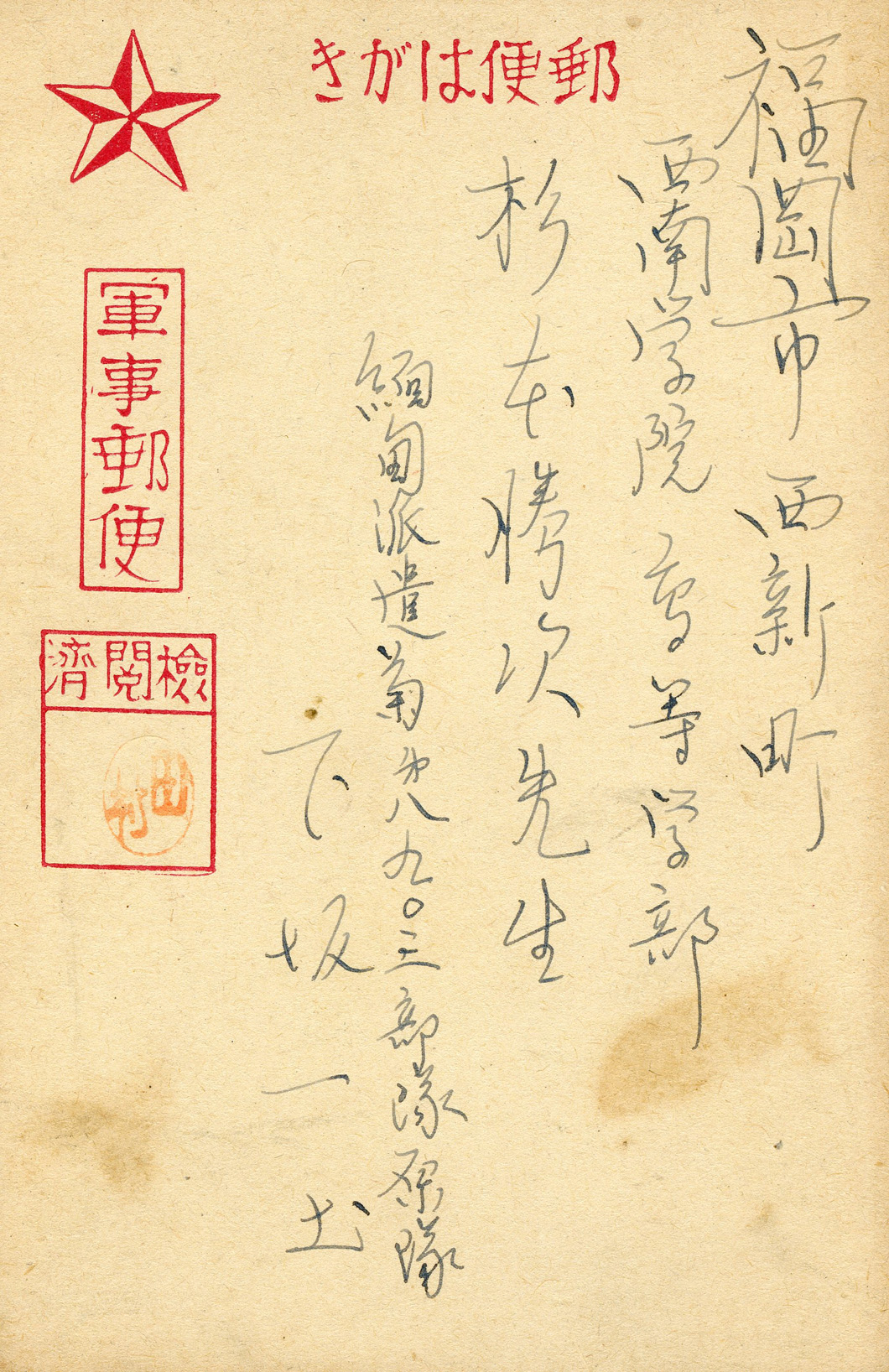
[Below: Postcard reverse.]
